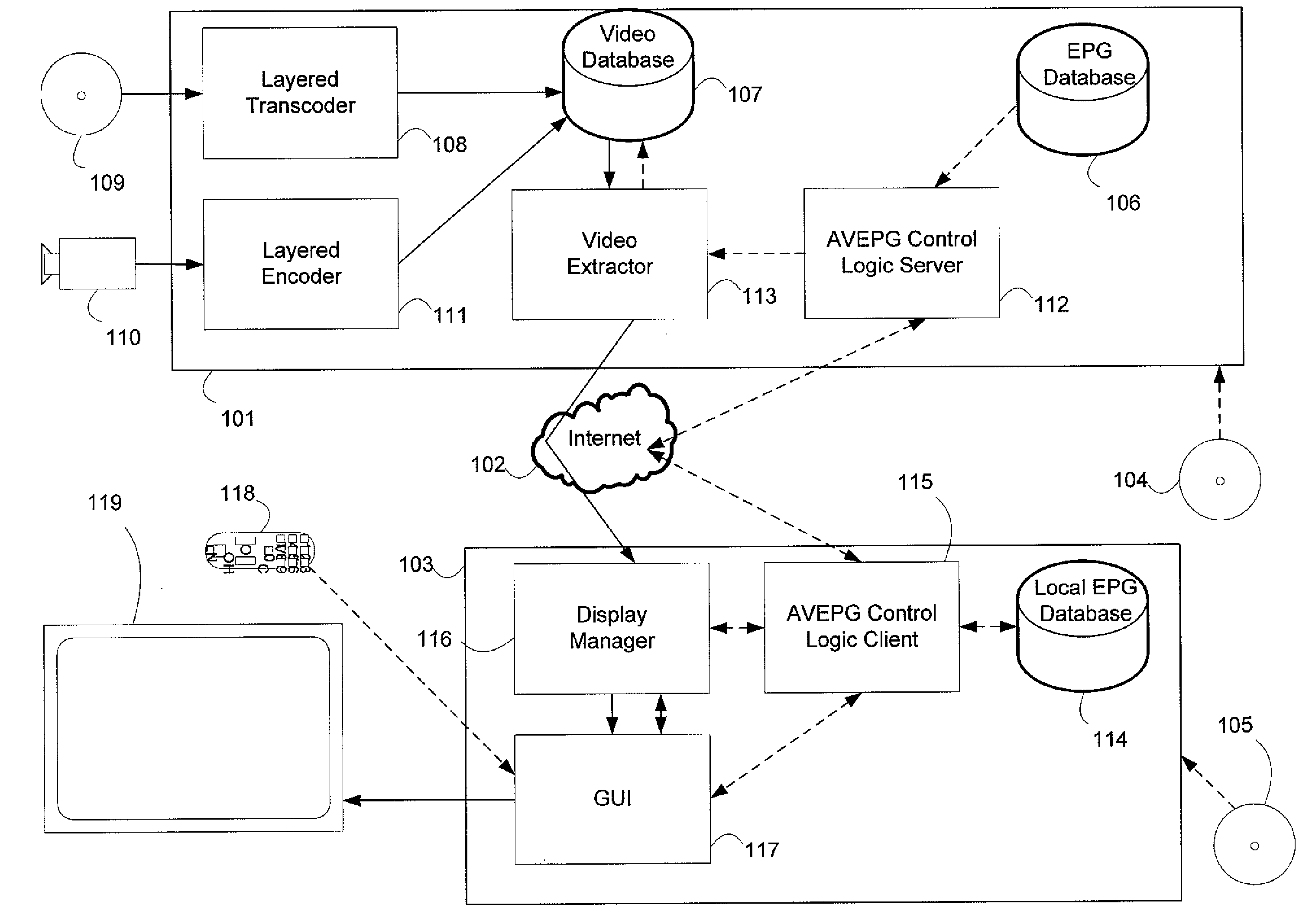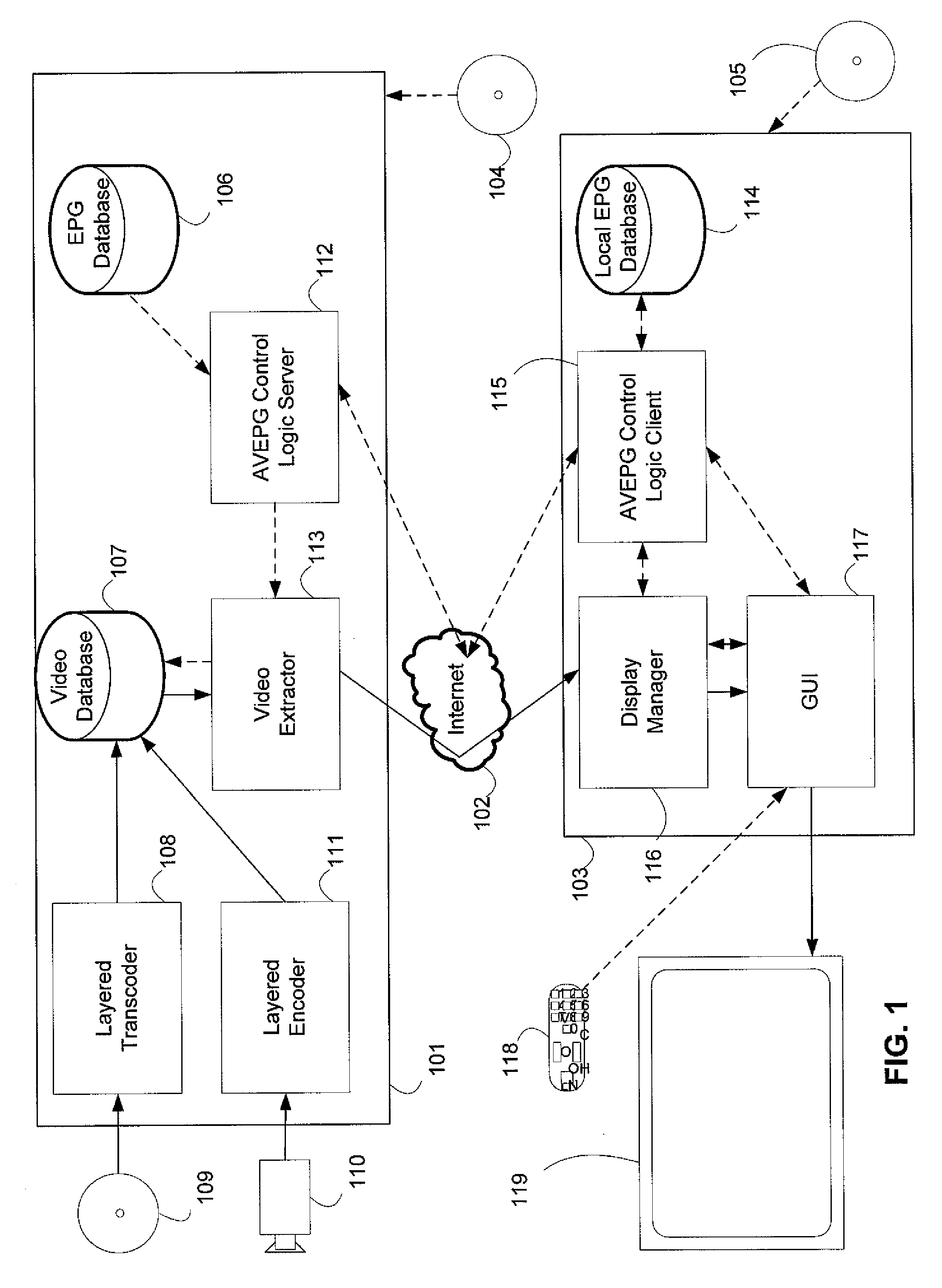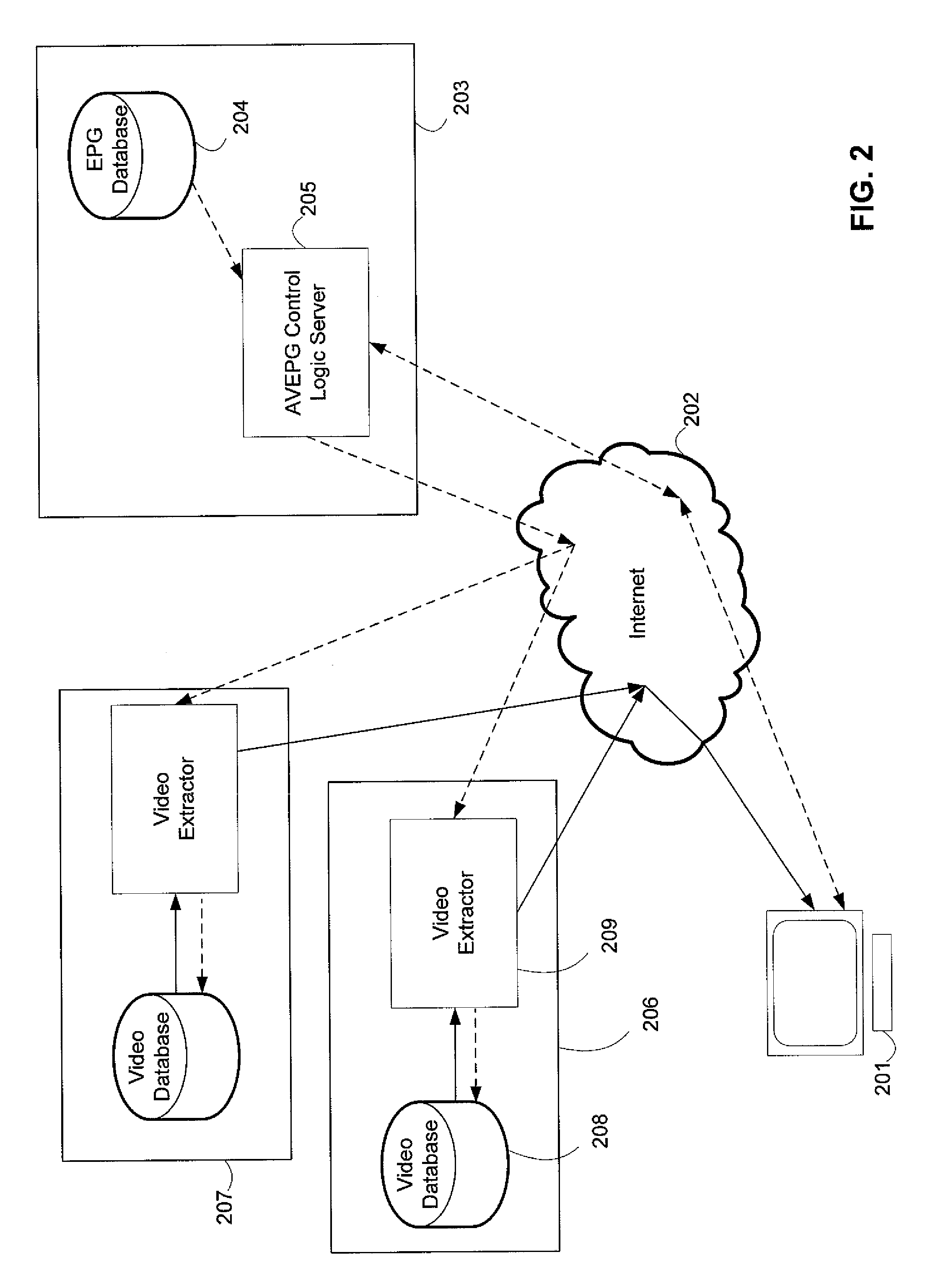System and method for an active video electronic programming guide
- Summary
- Abstract
- Description
- Claims
- Application Information
AI Technical Summary
Benefits of technology
Problems solved by technology
Method used
Image
Examples
Embodiment Construction
[0052]The present invention provides techniques for transmission and preparation for display of real-time audio-visual content of multiple TV programs or channels to be displayed in an Active Video Electronic Programming Guide (AVEPG). This advanced form of an EPG generates the search and discovery EPG mechanisms from the actual, real-time audio-visual content of multiple channels. In other words, the AVEPG system takes content as it is broadcasted, and converts it, in real time, into a format that allows the user to preview multiple channels—showing different audio-visual content simultaneously—and make his / her selection from these channels. An AVEPG thus elevates the significance of audio-visual content on the display throughout the entire viewing cycle—starting from when the user turns on the video display (e.g., TV or computer monitor), through search and discovery, to watching a program—and by doing so, it improves the user experience of the EPG.
[0053]An AVEPG includes a tradit...
PUM
 Login to View More
Login to View More Abstract
Description
Claims
Application Information
 Login to View More
Login to View More - R&D
- Intellectual Property
- Life Sciences
- Materials
- Tech Scout
- Unparalleled Data Quality
- Higher Quality Content
- 60% Fewer Hallucinations
Browse by: Latest US Patents, China's latest patents, Technical Efficacy Thesaurus, Application Domain, Technology Topic, Popular Technical Reports.
© 2025 PatSnap. All rights reserved.Legal|Privacy policy|Modern Slavery Act Transparency Statement|Sitemap|About US| Contact US: help@patsnap.com



